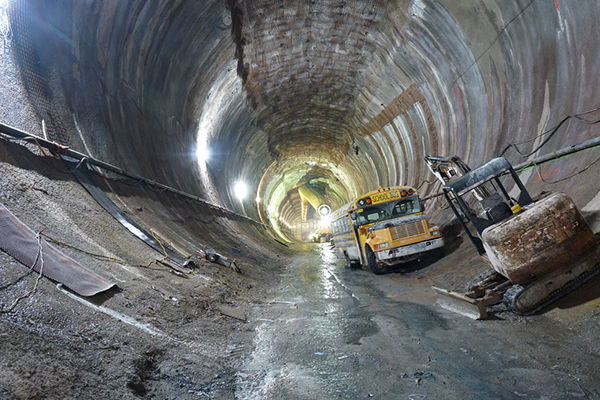Dubai Metro Case Study: Monitoring the Longest Driverless System in the World
- encardiorite
- Oct 22, 2020
- 3 min read
The first line (Red) of the Dubai Metro, which covered 10 stations was inaugurated at 9:09:09 pm on 9 September 2009 by Mohammed bin Rashid Al Maktoum, Ruler of Dubai. Since then, the line has been expanded to serve 29 stations, while the green line now serves 20 stations. These two lines were constructed and monitored in two different phases, with each of one with their own set of challenges and difficulties.
In this article, we will be taking an in-depth look into the metro and underground monitoring, as well as the sensors and instruments used.
Let’s start with the basics – the importance of underground tunnel monitoring.
Tunnel Monitoring for Metro
As the metro railway tracks run underground in tunnels, geotechnical monitoring plays an important role in authenticating the stability and strength of the tunnel, evaluating the intensity of the operations involved during construction, and verifying the design. This helps to ensure that there is no risk to life or property, and any unusual shift or tilt can be judged beforehand to address the problem.
The instrumentation of underground tunnels helps us to study the behaviour of the tunnel with respect to the rheological behaviour of the rock mass. Any changes or shifts in the fault zones, walled sections, inflow, etc are quickly identified and prevented if need be.
Monitoring and Instrumentation prove to be useful even in the pre-construction phase as the sensors placed in the exploratory tunnels and boreholes done from the surface provides accurate information about the existing ground condition, which in turn helps to make a foolproof design accounting for the ground condition.

Post-construction, geotechnical monitoring helps to keep the entire structure stable, while looking out for signs of natural calamity like an earthquake, etc. This, in turn, assists in planning and optimizing the maintenance schedules.
Encardio-rite provides highly reliable and accurate in-house manufactured sensors that prove to perform even under the harshest conditions. Moreover, its web-based monitoring solutions work to provide long-term safety monitoring of tunnels. These instruments can be installed on the tunnel roof and at selected arrays along the walls of the tunnels to monitor vertical, horizontal and longitudinal in-tunnel direction deformation components.
Encardio also offers several advanced monitoring technologies which include 3D deformation monitoring, laser scanning, aerial survey, etc to keep an eye on the structural health of the tunnel and surrounding structure.
Dubai Metro - A case study

Dubai metro is the first urban network to run in the Gulf Arab States and is the longest automated driverless system in the world. With the metro running underground in the city centre, from the Sheikh Rashid/Sheikh Khalifa Bin Zayed intersection to Salahuddin/Abu Bakr Al Siddique intersection on the Red line and from Garhoud to Oud Metha Road on the Green line, it has provided a safe and swift commute to thousands of workers in the country.
The Green and Red line were the first to be monitored and constructed, which was done in two different phases.
Phase 1 included the Red Line running from Al-Rashidiya to Jebel Ali, a 53km long rail line connecting 26 stations. Out of this, 5.6 km of the line and four stations operated underground. This took place for 2006-2009.
Phase 2, which was the Green Line, constituted 14 stations (18km), out of which 6 (7.9km) of them were underground. This was carried on from 2007-2010.
The underground pre and post-construction work were carried out while ensuring that it won’t affect the buildings in the zone of influence. Encardio-rite and the team laid out a sound and reliable instrumentation and monitoring plan designed to meet the ...[Continue Reading]







Comments